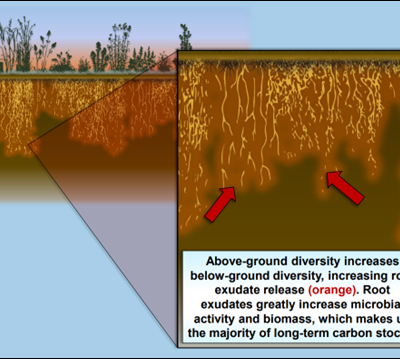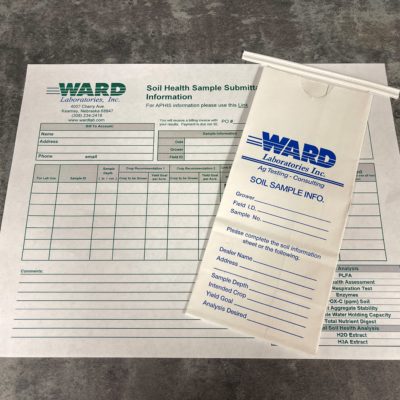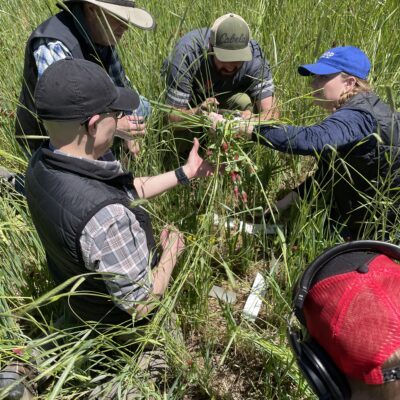The Role of Bacteria
Feeding soil microbes includes feeding fungi and bacteria present within the soil. Bacteria are single-celled organisms that are generally 4/100,000 of an inch wide and long. A teaspoon of healthy soil can contain between 100 million and 1 billion bacteria. Because of their abundance, bacteria play important roles in the way soil functions including water infiltration, nutrient cycling, and disease suppression. Therefore, it is important to feed the soil microbes.
Bacteria Classifications
The most common classification for bacteria is based on a staining technique known as the Gram stain. Therefore, this is the most basic classification that a scientist can use for bacteria. Gram positive bacteria have a thicker cell wall which takes up the stain. These bacteria are hardier than Gram negative bacteria and can resist water stress. On the other hand, Gram negative bacteria tend to be more sensitive to drought and water stress.
A family of Gram positive bacteria that Ward Labs tests for is Actinomycetes. Actinomycetes grow in a fashion similar to fungi with hyphal strands. These bacteria are what gives the healthy soil it’s “earthy” smell. One function of Actinomycetes is to degrade hard to degrade compounds, such as chitin and cellulose, at a high pH. This function is similar to fungi, but fungi are active at low pH.
The Role of Fungi
In addition to bacteria, fungi are also a part of the soil microbes. Fungi are microscopic organisms that grow as long strands known as hyphae. Hyphae are usually only a few thousandths of an inch in diameter. These hyphae push their way between soil particles, roots, and rocks. Fungi play important roles in the way soil functions including water infiltration, nutrient cycling, and disease suppression. They also convert difficult to digest organic matter into forms that bacteria and other organisms can use.
Specifically, at Ward Labs, we test for 2 types of fungi: arbuscular mycorrhizal and saprophytic fungi. Mycorrhizal fungi colonize plant roots and are able to solubilize phosphorus and bring nutrients such as phosphorus, nitrogen, and micronutrients to the plant. Arbuscular mycorrhizal fungi are specifically associated with grasses, row crops, vegetables, and shrubs. On the other hand, saprophytic fungi are a decomposer that are able to convert organic matter into biomass, carbon dioxide, and organic acids. These organic acids help increase the accumulation of humic acid rich organic matter.
Effectively Feeding Soil Microbes
Healthy, productive soil relies on healthy, productive microbes. For this to occur microbes need a balanced diet. Monocultures, and even rotations, are not enough to provide a balanced diet for the microbes. Instead, the microbes need the right nutrients. These include carbon, nitrogen, phosphorus, sulfur, oxygen, and hydrogen. Leaving residue provides carbon, and oxygen and hydrogen are easily taken up from the air. Now, the microbes are only lacking nitrogen, sulfur, and phosphorus. Historically, farmers have fertilized for the crop. Instead, we should be fertilizing the system which in turn supports the crop. But how do we fertilize the system?
Feeding soil microbes means increasing organic matter. Found within the organic matter is mostly carbon, but also sulfur, phosphorus, nitrogen, and potassium. Organic matter can be thought of as a storage facility for nutrients. Under no-till nutrients are slowly released and stored for future use by microbes and plant roots. Conventional tillage releases large amounts of nutrients, but the excessive can’t be stored because the organic matter has been destroyed. This results in nutrient leaching. To prevent nutrient leaching consider planting cover crops. These cover crops can help increase soil organic matter. Also consider utilizing compost applications, which will also increase soil organic matter. Regular soil testing will also help to plan proper fertilizer applications.
Tests Performed By Ward Laboratories, INC
At Ward Labs the test to help you understand your microbial content in your field is the phospholipid fatty acid (PLFA) analysis. This tests for total microbial biomass while also breaking that down into the specific categories of bacteria and fungi discussed above. For a fertilization plan, the Haney test is the way to go. This test is different than regular soil testing as it calculates plant available nutrients instead of just nutrients that are there. Overall, soil testing can provide important information for your farming or growing operation.





Do microbes always exist in all soils, but being dormant at times or do they needed to be added to the soils until such time the the SOM and production methods keep the populations alive.
Basically, I’m trying to find some definitive answer to the question… are microbes always there and just need feeding or do we have to make sure the right ones are there, then properly feed. I have very smart people on both sides of debate, making it hard to formulate my beliefs.
Thank you
Hi Todd,
I apologize to have not seen this comment sooner! I would reccomend you reach out to our in house consultant Patrick Freeze. Here is his email: pfreeze@wardlab.com.